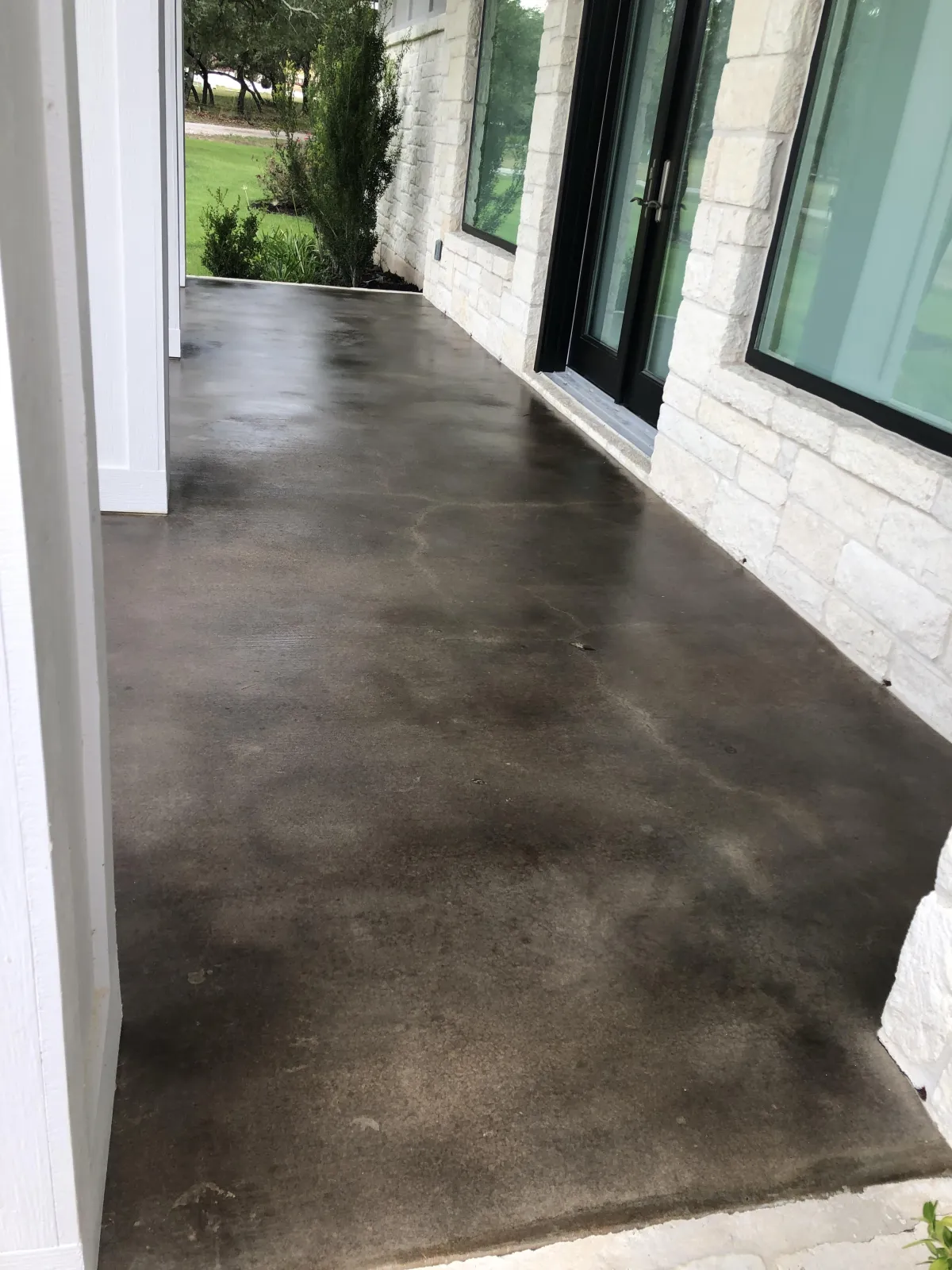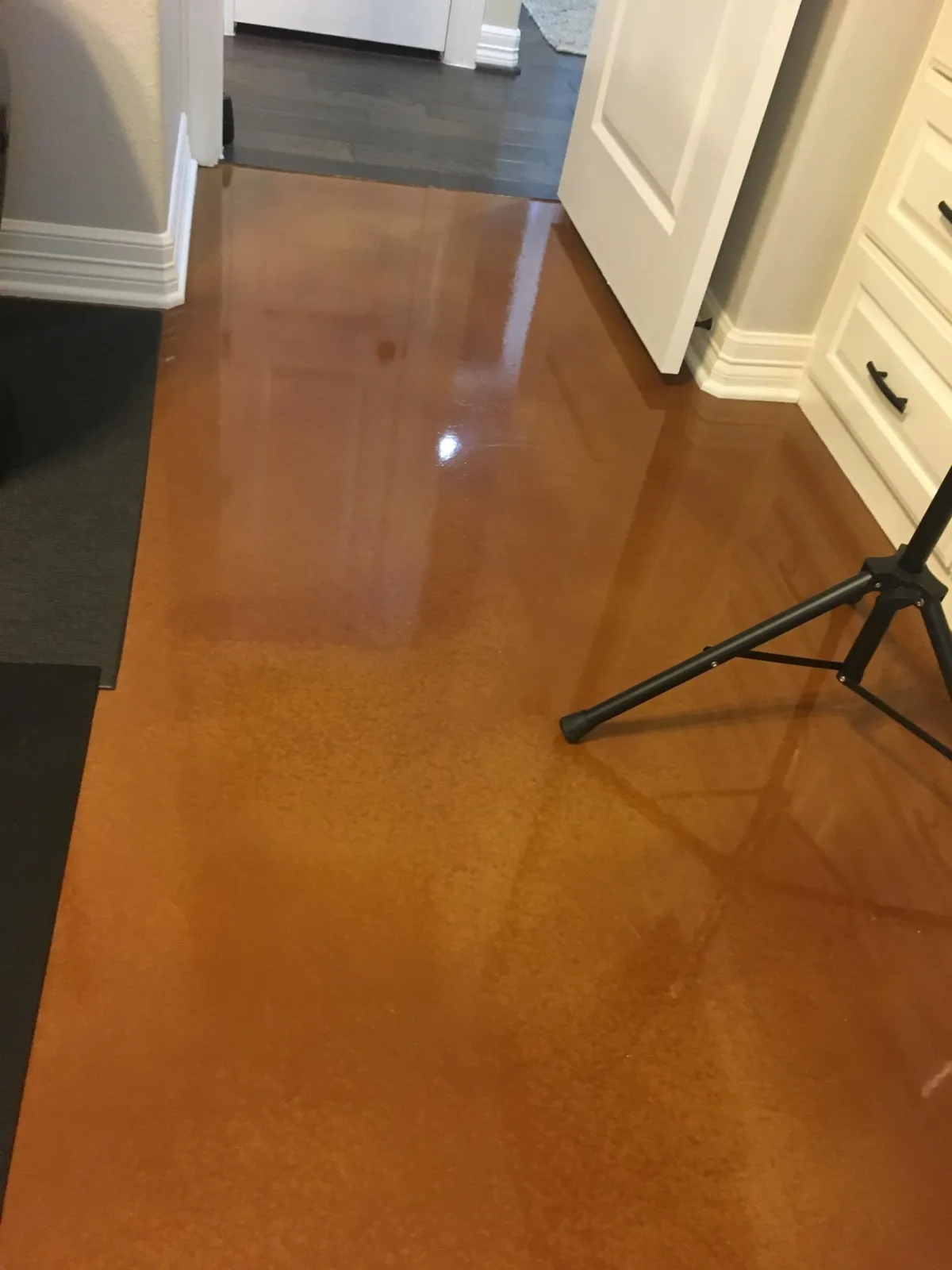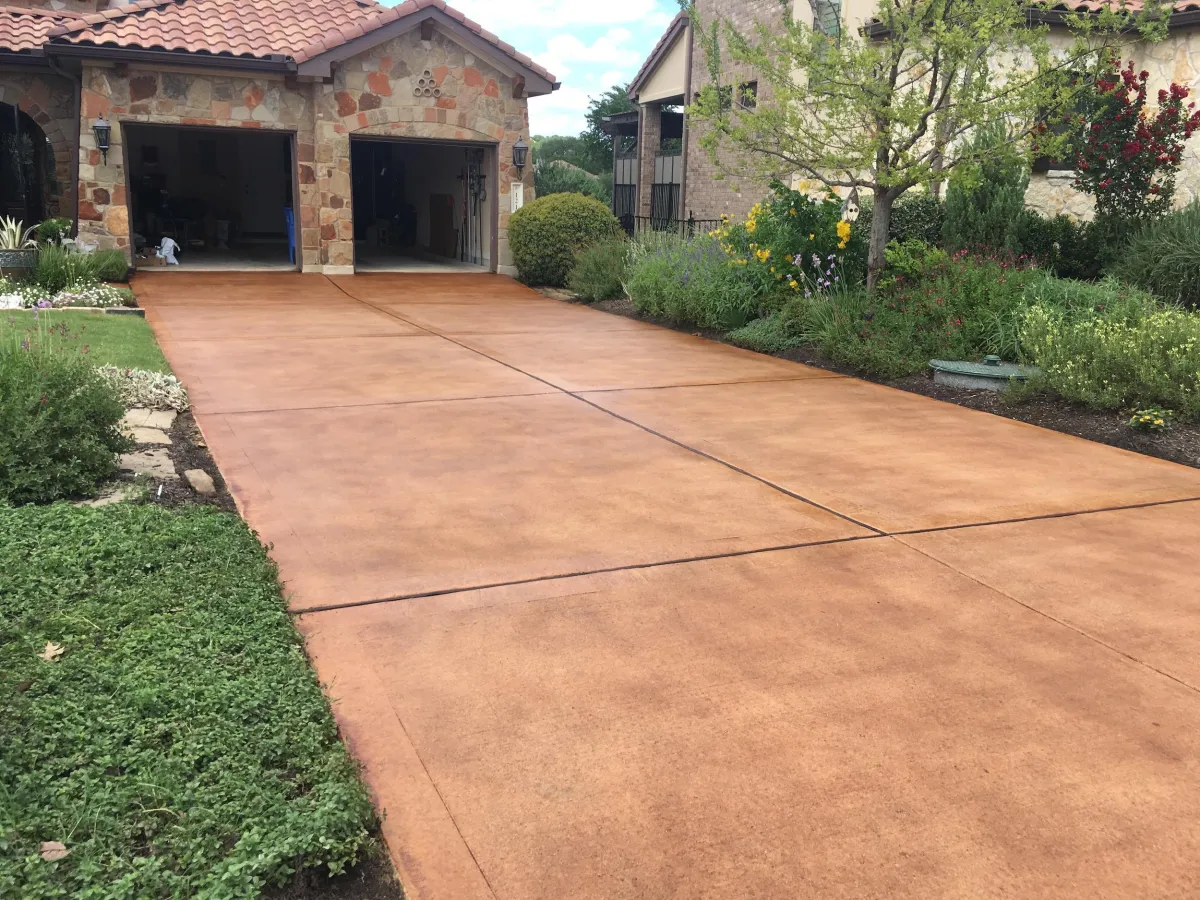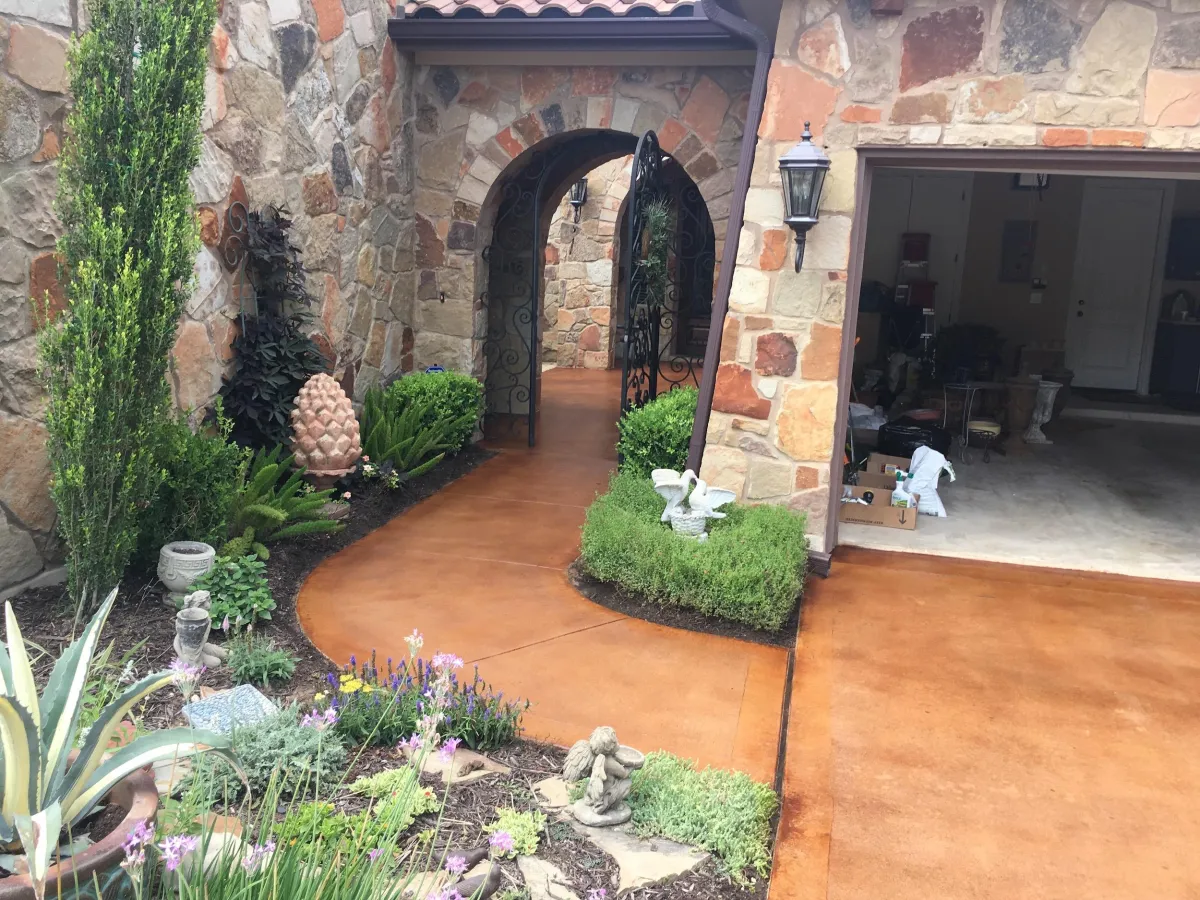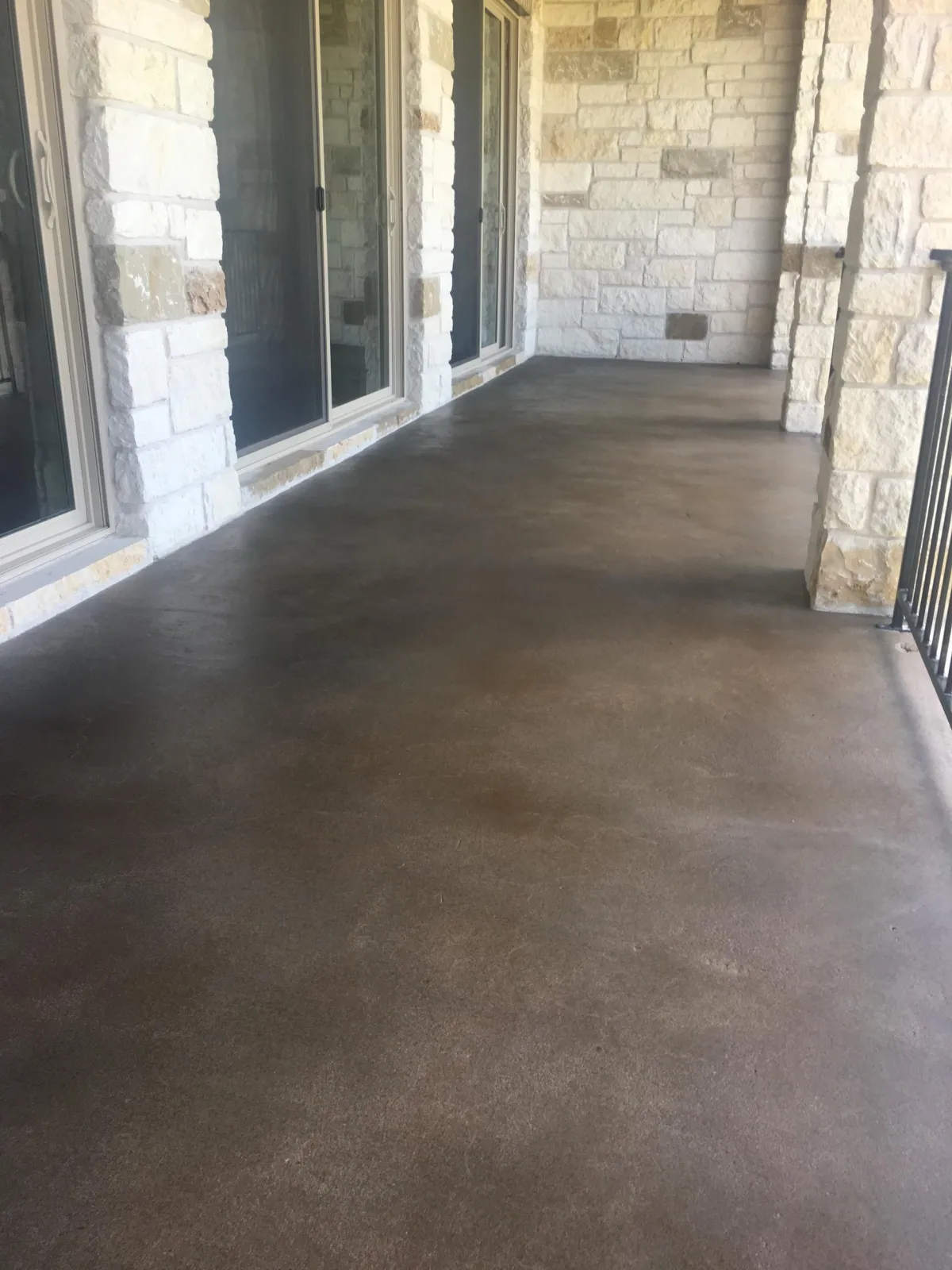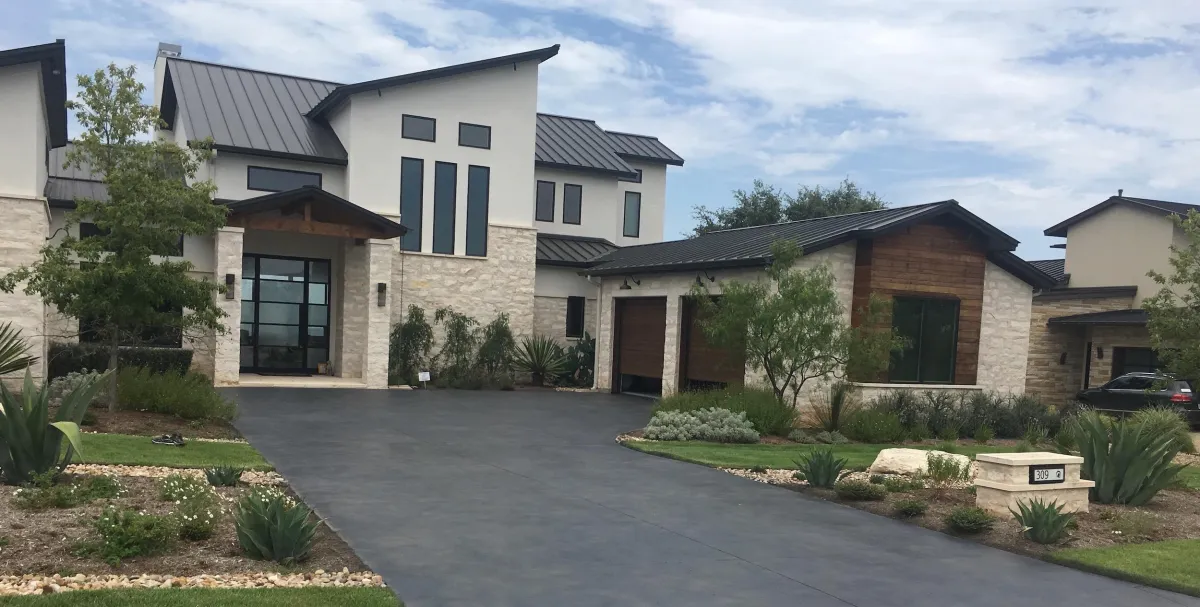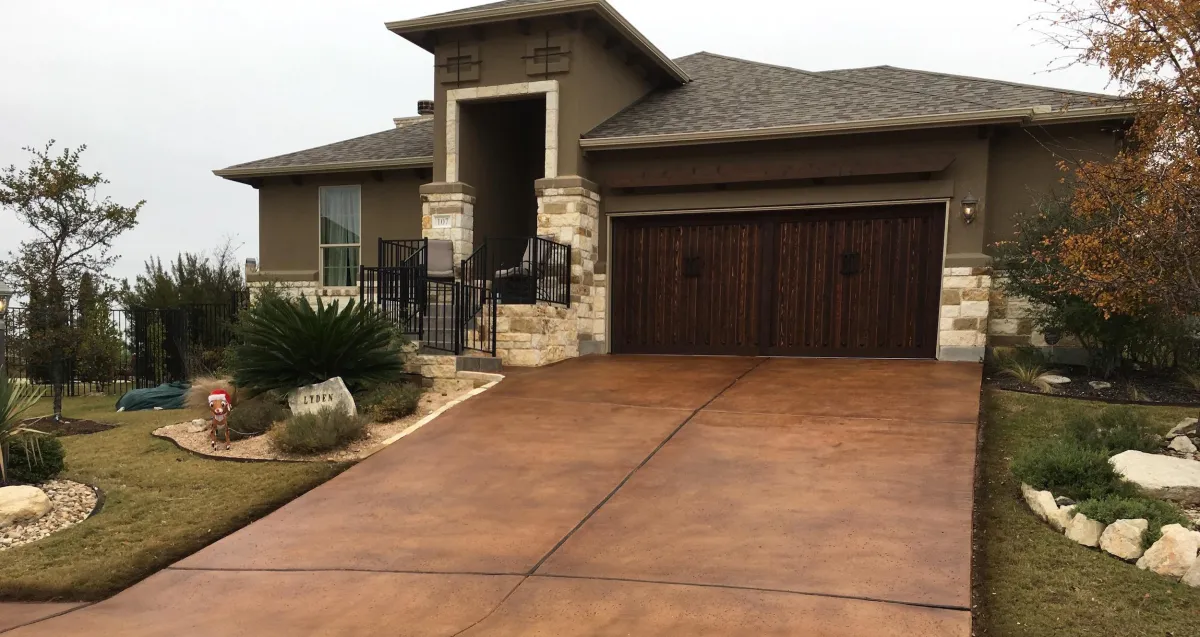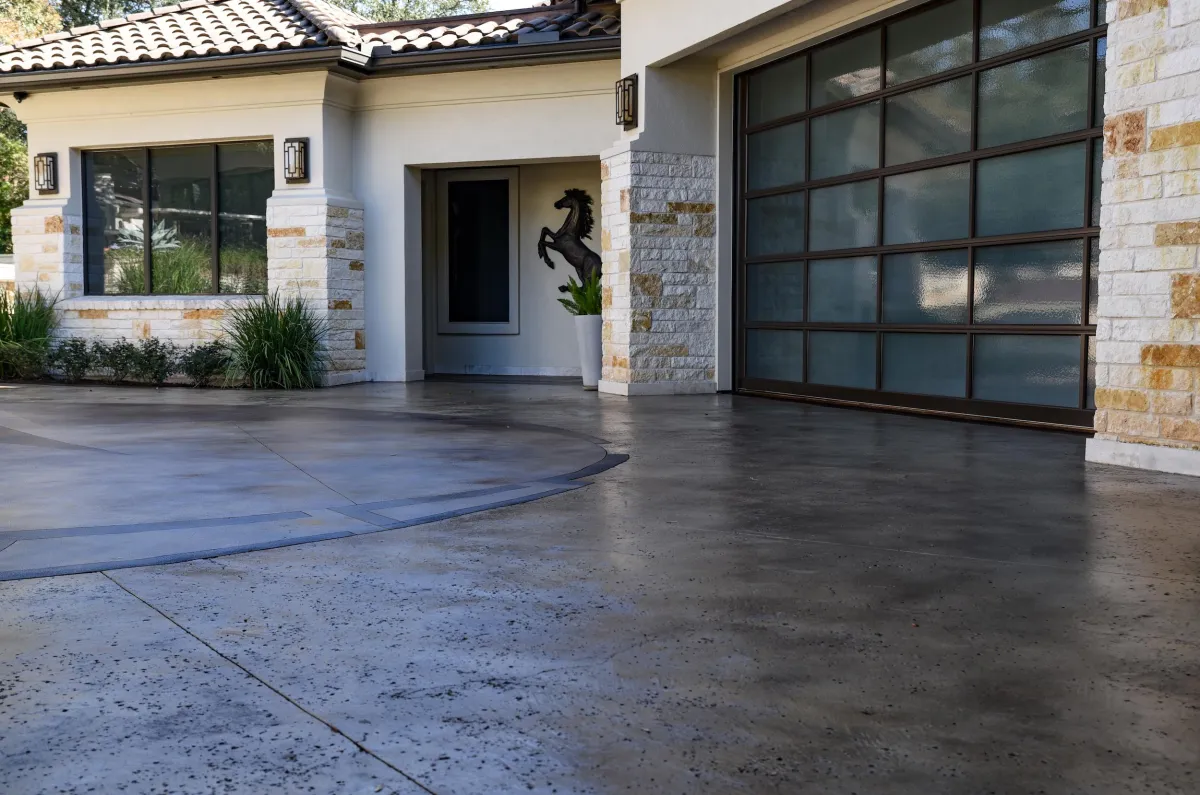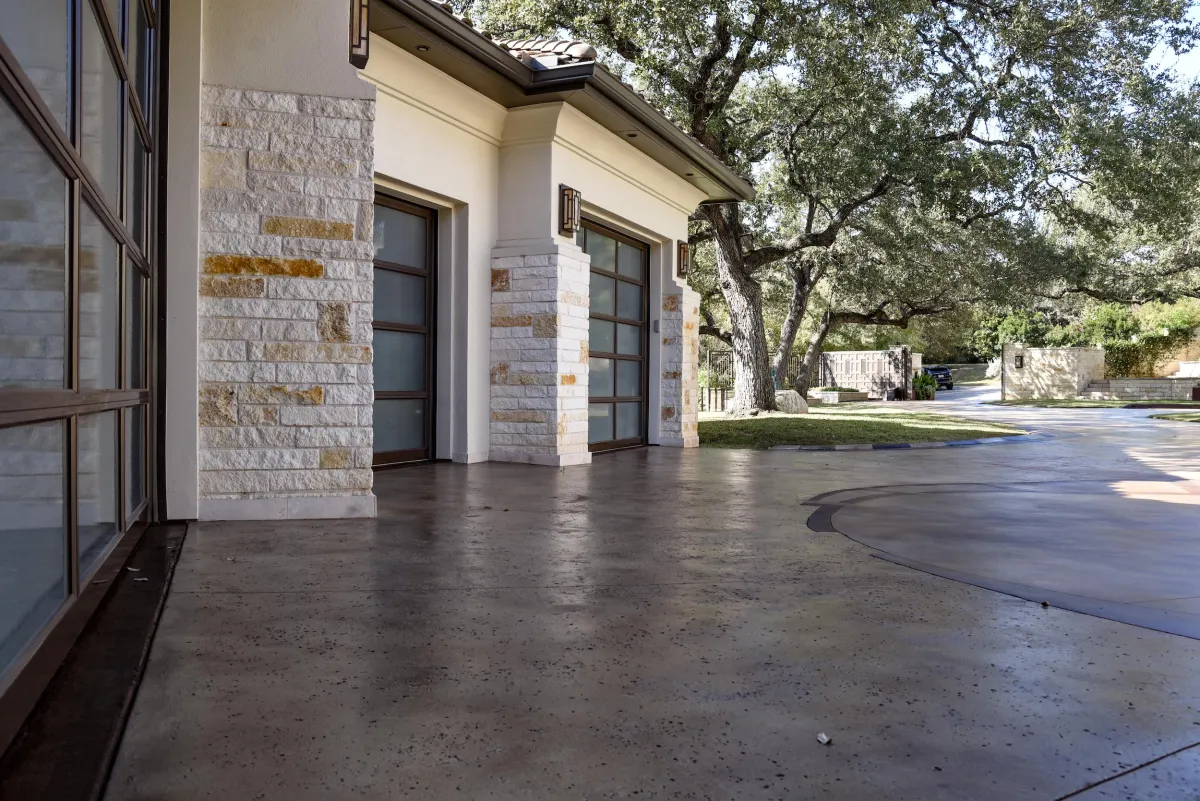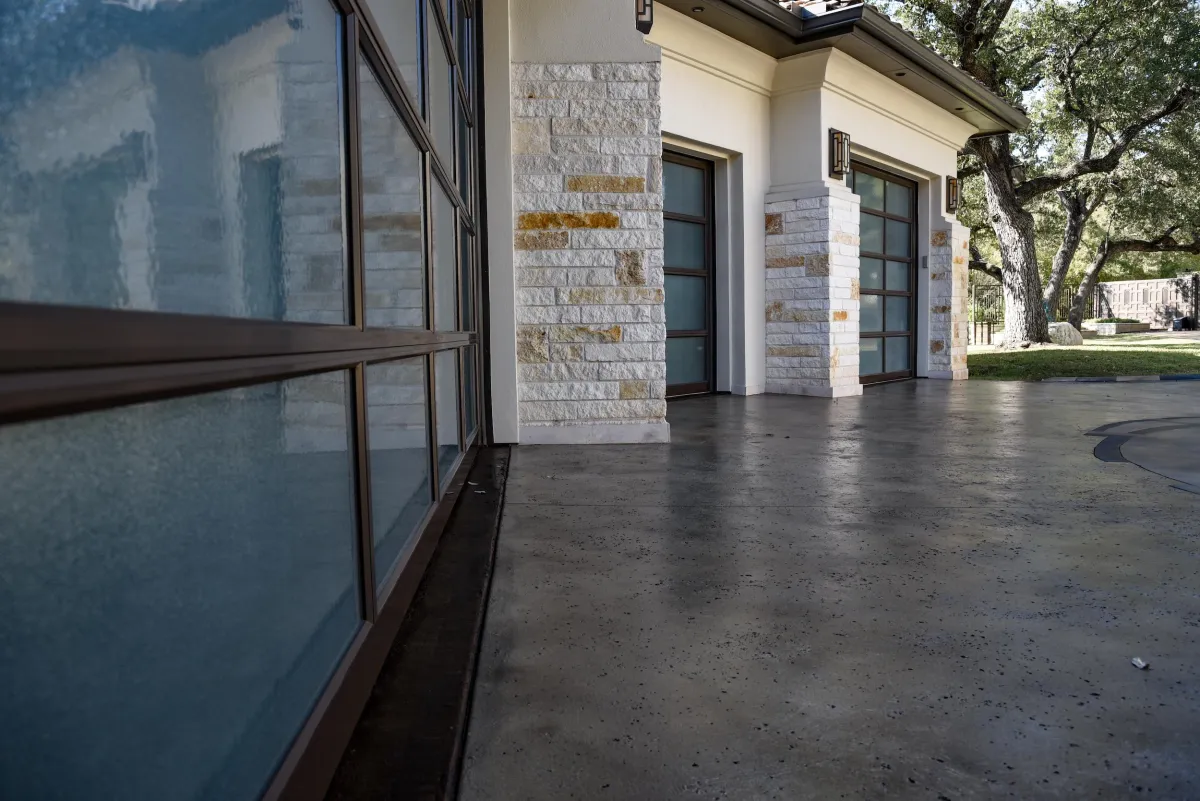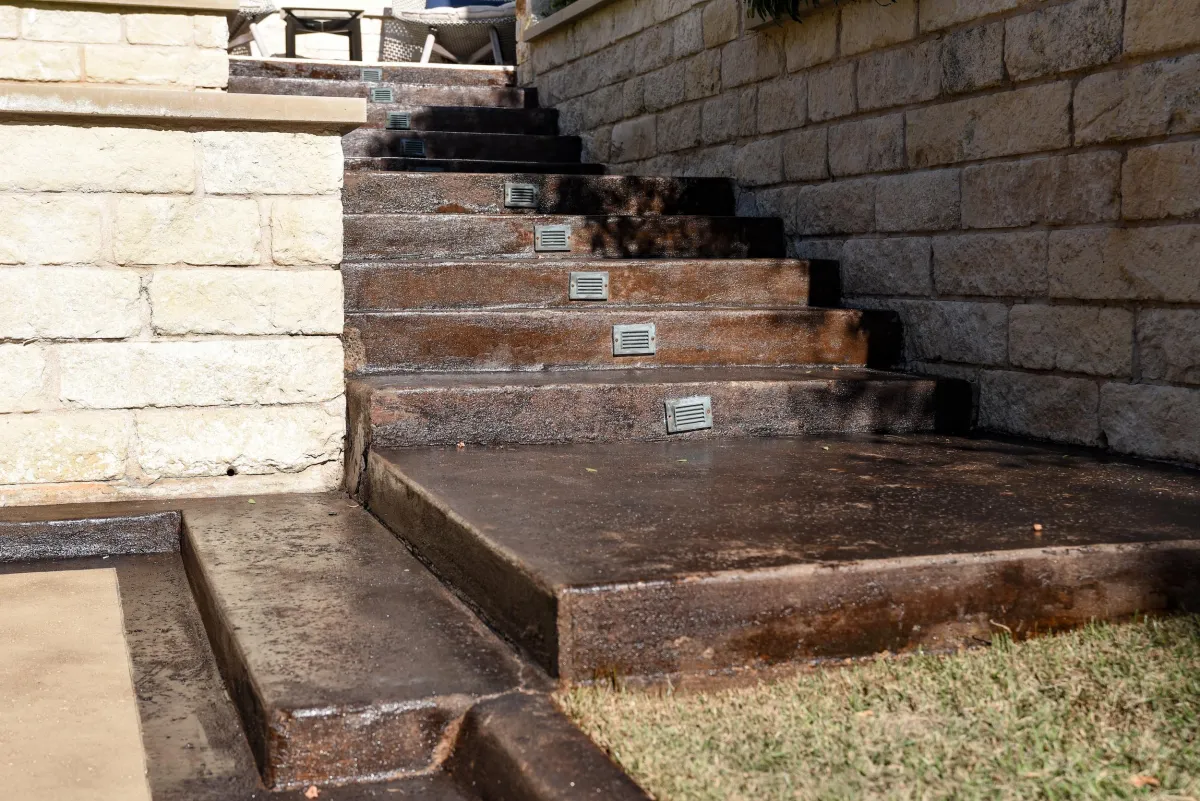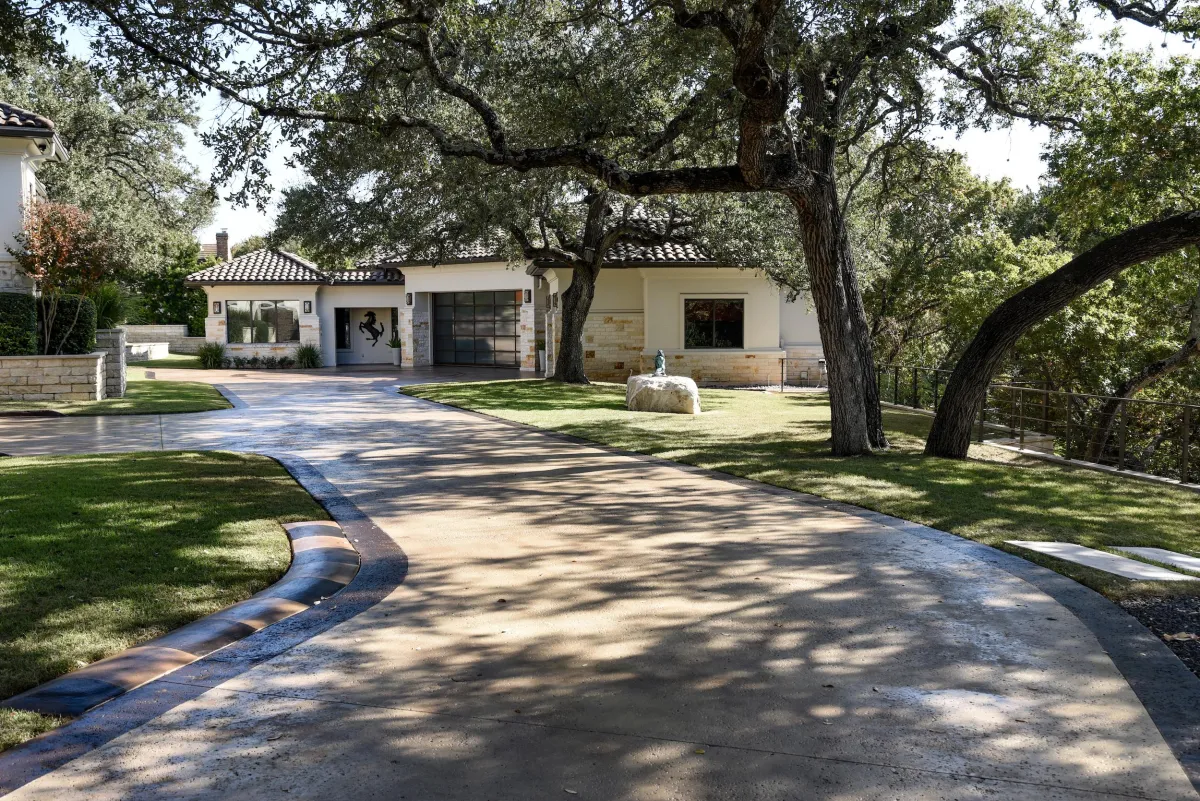Concrete Staining
Transform your concrete into an architectural work of art.
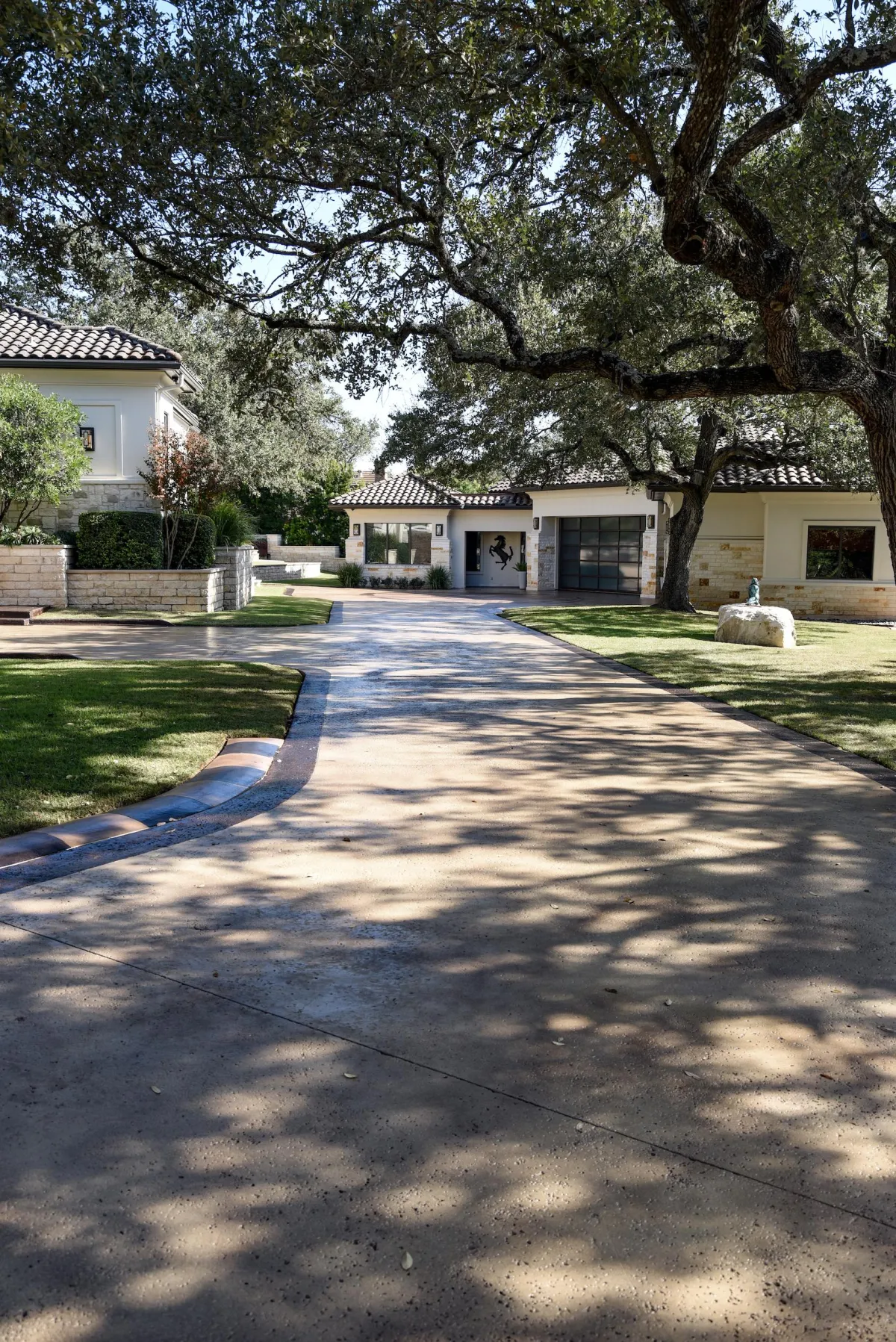
About Our Concrete Staining Services
Staining concrete is one of the most popular applications for transforming mundane concrete slabs into architectural works of art. Homeowners, designers and builders are drawn to stained concrete because of the dramatic and unique effect that can be achieved by combining colors and various application techniques.
Stain isn’t a paint or coating agent. It’s a coloring process involving a chemical reaction on a cementitious material. It’s a long-term, durable solution that can turn any plain concrete floor into an attractive, low maintenance surface. Concrete stain is offered in a variety of color choices, and, when combined with creative design, can create a beautiful one-of-a-kind look.
Acid-Based Stains
Acid-based stains give concrete a mottled, variegated, marble-like appearance. With these types of stain, the effect is never uniform, and the tones will vary from slab to slab. Even one slab can have random, multi-hued color variations…which is part of the appeal and charm of acid-stained concrete.
Acid stain penetrates and reacts with concrete and cement to produce rich, attractive finishes. When applied to concrete, the stain’s metallic ions combine with concrete particles. The resulting oxides produce a variety of mottled colors that are ideal for both interior and exterior projects.
Acid stain is the most durable and the most UV resistant of the concrete staining systems. Colors available range from subtle earth tones (tan, brown, terra cotta) to soft blues and greens. We also offer concrete dyes to help expand the color palette for additional options.
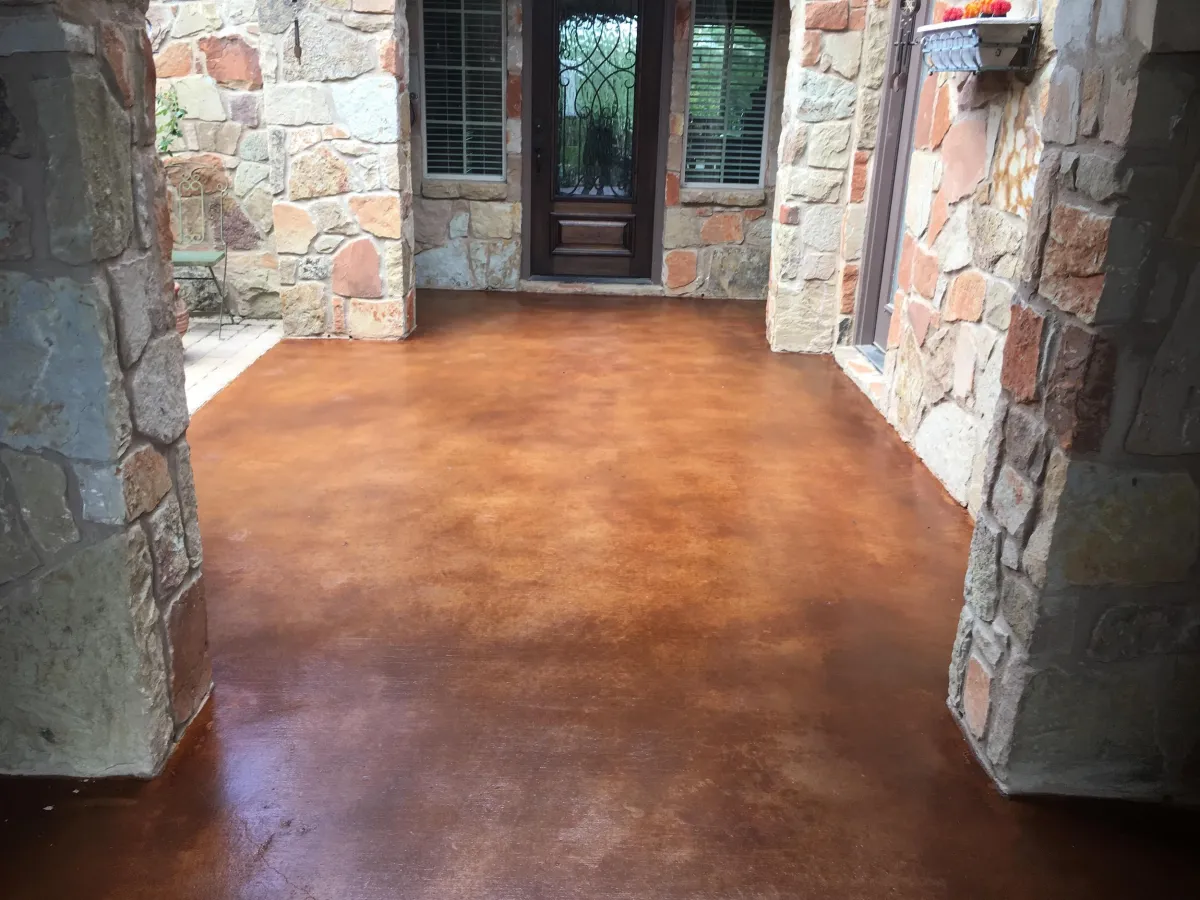

Water-Based Stains
Water-based stains don’t contain caustic ingredients, and can be used as an alternative to solvent and acid-based stains. They’re ideal for stamped concrete rejuvenation or for adding color to untreated or aged concrete. Water-based stains are designed for use with most overlay systems, and can be used over many acrylics. Although the effect of using a water-based stain isn’t as abstract, mottled or variegated as the effect you’ll get from acid-based stain, there are many more color choices in the water-based category.
Dyes
Dyes are available in a wide range of colors, and offer a vibrancy and intensity that can’t be achieved with stains. Unlike stains, which react chemically with the calcium hydroxide in concrete, dyes are non-reactive and impart color simply by penetrating a porous surface.
Dyes are available in water-based and solvent-based formulations, and produce varied results ranging from monotoned to translucent, depending on how they are applied. Water-based dyes typically produce more marbling and variegation (similar to the look of a chemical stain), while solvent-based dyes tend to be more monotoned and uniform in color. Some manufacturers offer water-based and solvent-based dyes that can be mixed together to produce special color effects. There is one downside to using dyes — they penetrate quickly, leaving little room for error during application. Also, dyes aren’t UV stable, so most manufacturers recommend indoor use only.
Frequently Asked Questions
How much does stained concrete cost?
The cost of staining will vary considerably depending on the complexity of the stain application, surface prep requirements, and the size of the project.
Why do people choose stained concrete?
Stained concrete offers a unique blend of beauty, durability, and affordability. With countless color and finish options, you can create a personalized look that complements your style. Unlike paint or coatings, stains penetrate the concrete, revealing its natural texture and character. This creates a warm, inviting, and authentic feel.
Stained concrete is highly durable and easy to maintain, making it a cost-effective and long-lasting choice. Whether you're enhancing your home or commercial space, stained concrete can add value and visual appeal.
What are my color options with stained concrete?
MD Concrete Creations offers several vibrant stain colors to choose from. The options are only limited by your imagination.
Can all concrete be stained?
Acid stain, Dyes and water-based stains can be applied to new or old and plain or integrally-colored concrete. They can also be used both indoors and out, on everything from concrete floors to pool decks, patios and driveways.
The most important consideration is the condition of the surface. If the concrete is covered by grime, glues, paint, coatings, curing membranes or sealers that inhibit the stain from soaking in, the stain won't be able to penetrate and achieve full color development. This is when it may be necessary to install a microtopping to recreate the surface in order to accept the stain.
How do I maintain stained concrete?
Although concrete stain is permanent and won't flake off like paint, it penetrates only the top layer of the concrete surface and will eventually wear away as the surface is worn by traffic or weather exposure. To prolong stain life, you should protect exterior stained concrete surfaces with a clear sealer and interior floors with a good floor wax. To keep your stained concrete looking its best, you will also need to clean it periodically by dry dust mopping and occasional wet mopping with a neutral-pH cleaner.
How do I choose the right stain color?
Color choice is often dictated by personal preference or by a desire to match or complement an existing color scheme, such as staining a concrete floor to mirror the same tones as a paint color on a wall, or the stone on a fireplace. Because stain color is permanent, many homeowners opt for neutral tones, such as golden-tans, browns, grays and greens.
What special effects are possible with stained concrete?
Depending on the color and application techniques used, stained concrete can be applied to achieve almost any look you desire; it can provide a lot of color/texture variation, have a consistent monochromatic design or anything in between.
What are the differences between acid stains, dyes and water-based stains?
Acid-based concrete stains are made up of inorganic metallic salts dissolved in an acid and water solution. They penetrate into the surface and react chemically with the concrete to form a permanent bond. The color they impart is translucent rather than opaque, resulting in deep, rich tones and attractive marbling effects.
Non-reactive dyes and water-based stains (typically a blend of acrylic polymers and pigments) fill the pores of the concrete surface to produce a colored film or coating to give a vibrant translucent finish. The key difference is that no chemical reaction takes place, so the color is more consistent. Water based stains are low in VOCs (volatile organic compounds) and safer to apply because they are free of solvents and acids.Dyes, although they are transported by solvents are generally better for hiding imperfections than the other stain options.
Does stained concrete fade?
Because stains penetrate into the concrete surface, their color is durable and long-lasting. When applied to properly prepared concrete, the color will not fade, chip, or peel away
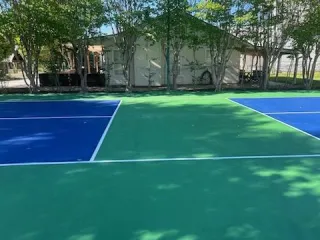
The Ultimate Guide to Acrylic Athletic Game Courts: Durability, Performance, and Aesthetic Appeal
When it comes to creating a high-performance athletic game court, choosing the right surface is critical. Acrylic athletic courts have become the go-to solution for sports enthusiasts, facility manage... ...more
Athletic Game Court
November 20, 2024•2 min read
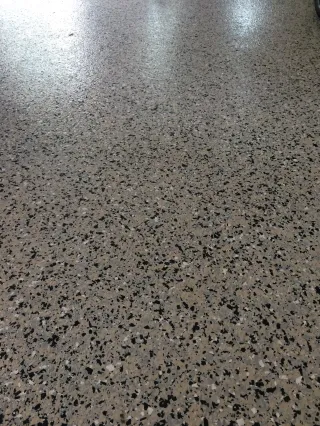
Choosing the Perfect Epoxy Color for Your Garage Floor: A Guide
Revamp your garage floor with epoxy! This guide helps you choose the perfect epoxy color based on your garage's use, personal style, and lighting. Learn about popular colors, maintenance tips, and mor... ...more
Epoxy Coatings
October 23, 2024•2 min read
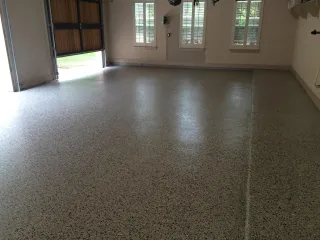
Epoxy Coatings: A Comprehensive Guide
Epoxy coatings are a popular choice for various surfaces due to their durability, chemical resistance, and aesthetic appeal. Whether you're looking to protect your garage floor, enhance the appearance... ...more
Epoxy Coatings
October 17, 2024•2 min read

